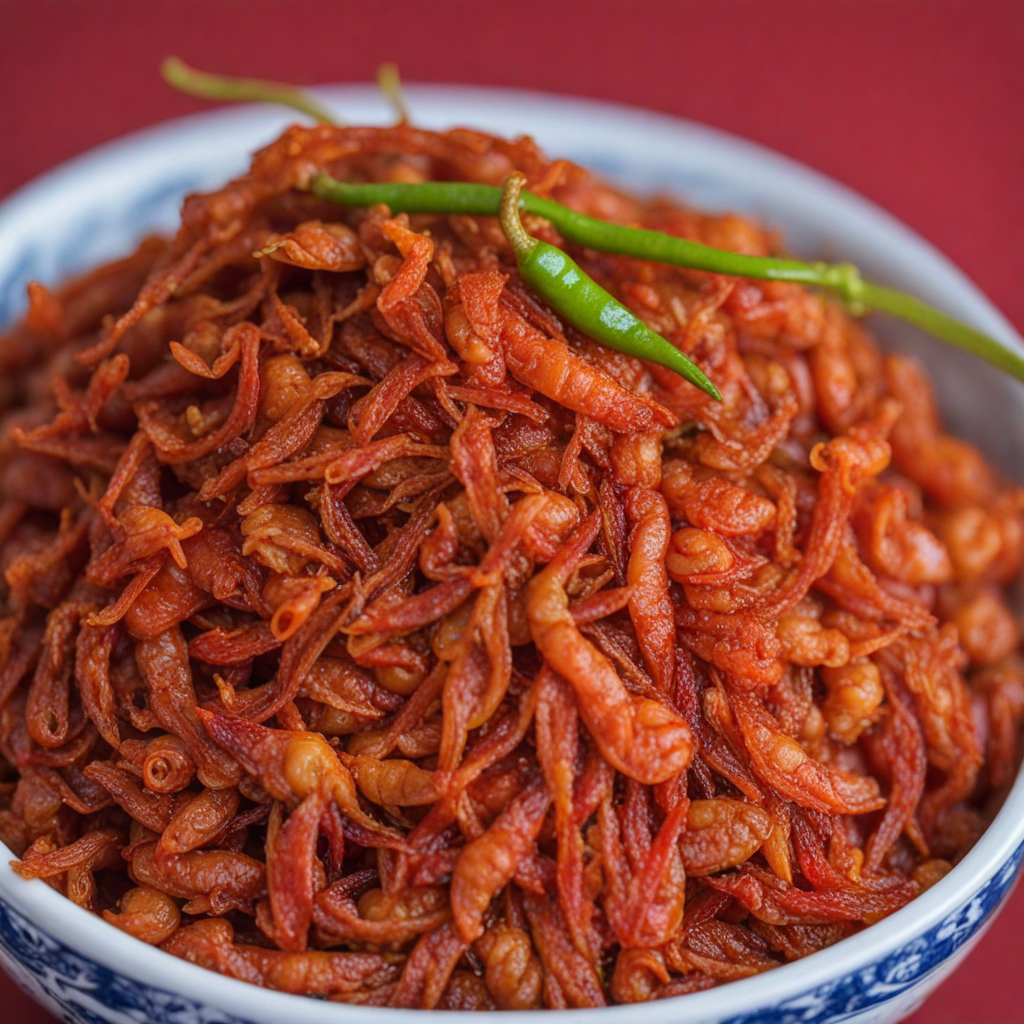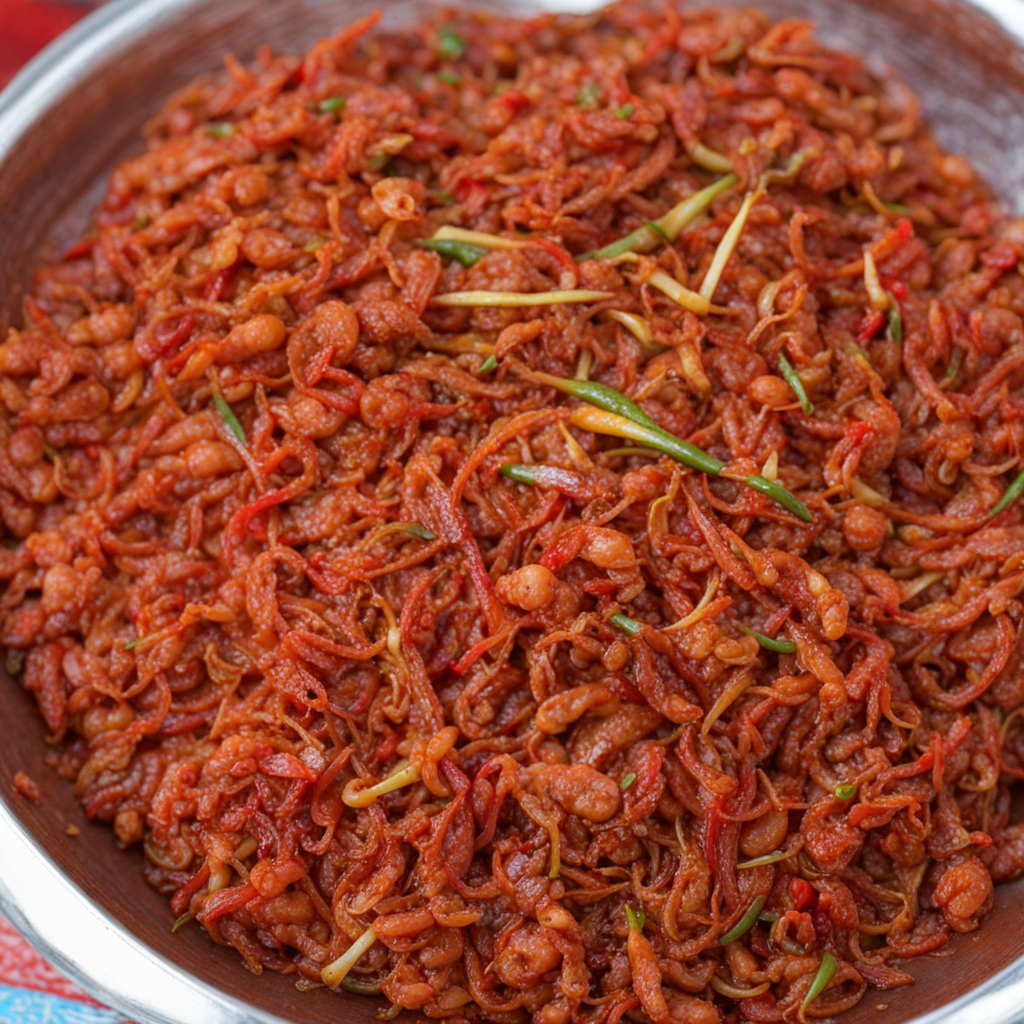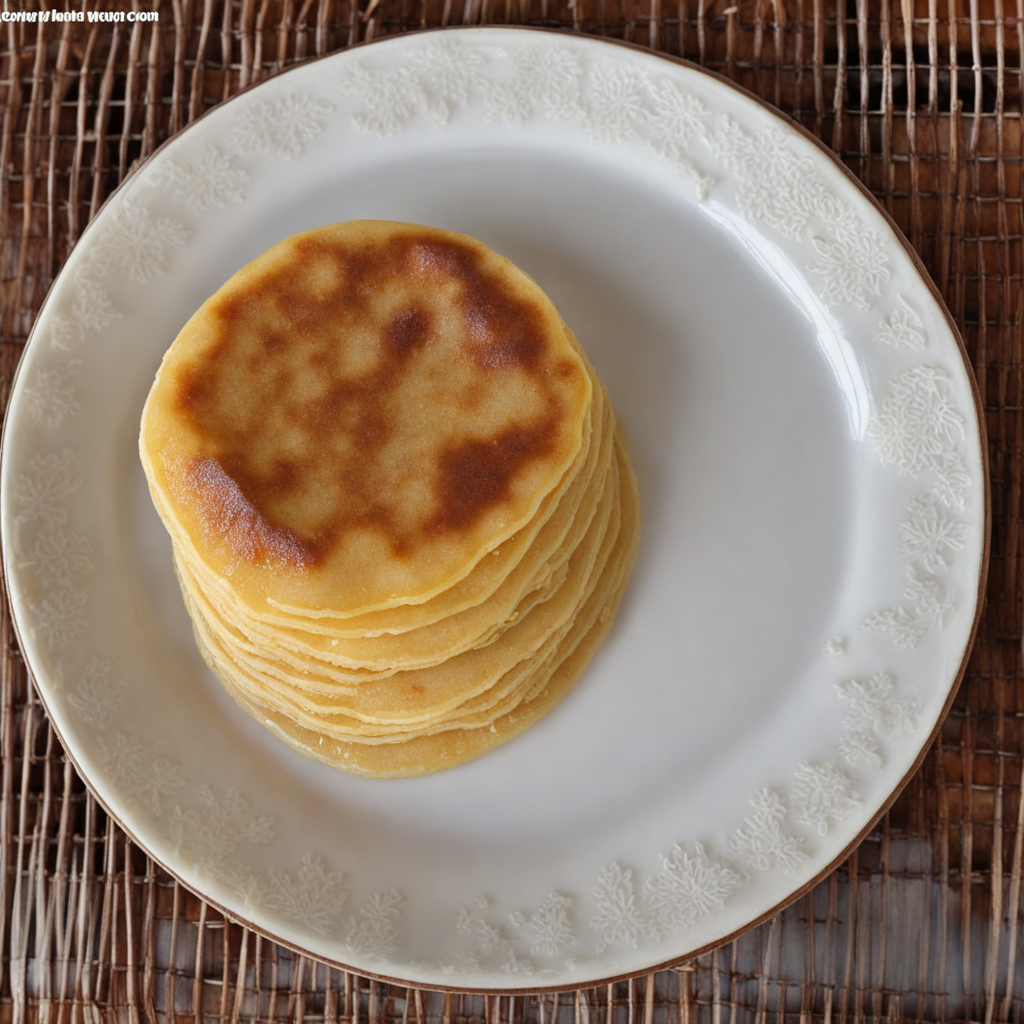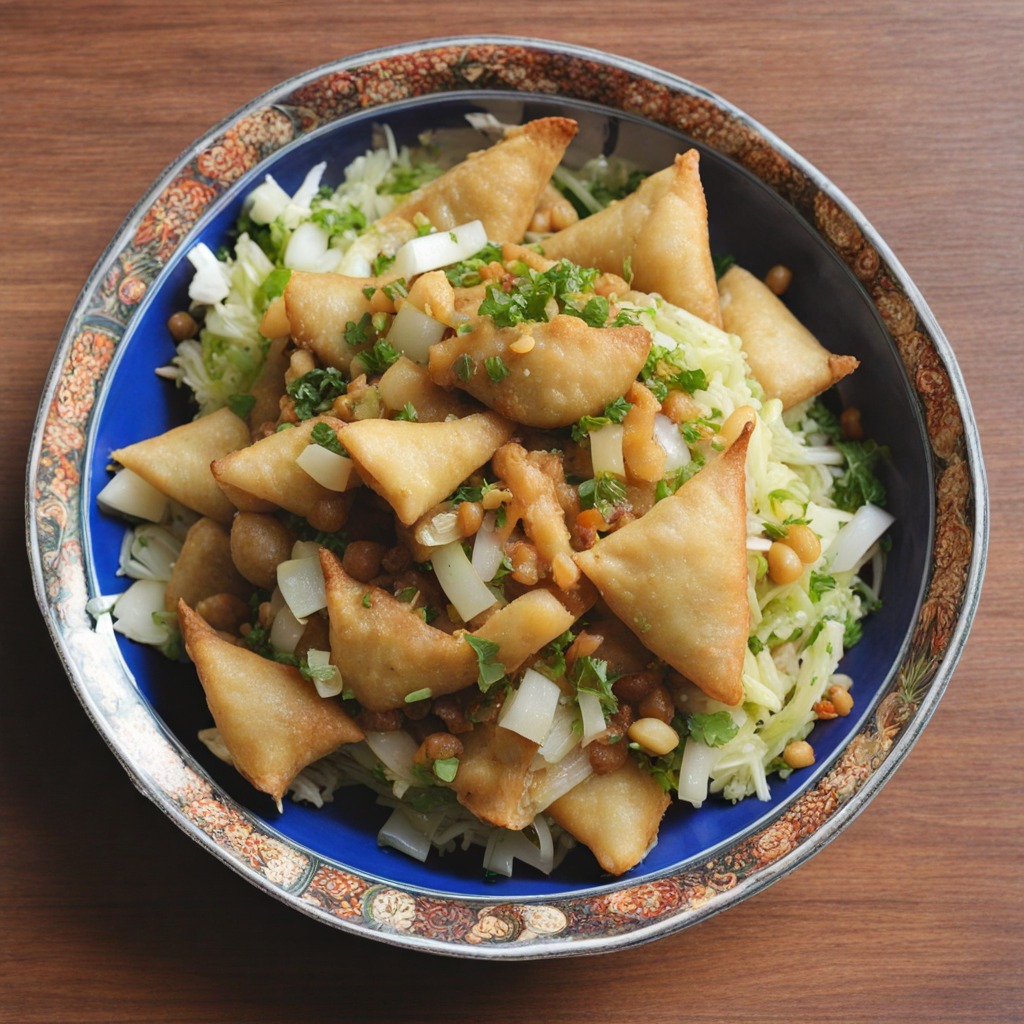Balachaung
Balachaung is a delightful and pungent condiment hailing from Myanmar, celebrated for its robust flavors and versatility. This savory dish is typically made with a base of crispy fried shallots or onions, which impart a rich, caramelized sweetness. Coupled with the unique umami of dried shrimp or fish, Balachaung offers a complex taste profile that balances salty, sweet, and slightly spicy notes. The addition of spices like turmeric and chili powder further enhances its depth, creating a vibrant and aromatic experience that captivates the palate. Traditionally served as a side dish or condiment, Balachaung can elevate a simple bowl of rice or accompany various meals, adding an irresistible kick. Its texture is a delightful contrast, thanks to the crunchiness of the fried shallots mingled with the chewy bits of shrimp or fish. The dish is often enjoyed with fresh vegetables or used as a spread, making it a fantastic addition to any dining table. Its rich flavors can transform everyday foods into extraordinary culinary experiences. For those venturing into the world of Myanmar cuisine, Balachaung is an essential taste to discover. It embodies the essence of Burmese cooking, showcasing the balance of flavors and the importance of freshness in ingredients. Whether you are a seasoned foodie or a curious novice, indulging in Balachaung promises a delicious journey that highlights the unique and vibrant culinary heritage of Myanmar.
How It Became This Dish
The Fascinating Journey of 'ဘာလာချောင်': A Culinary Treasure from Myanmar Introduction Among the rich tapestry of Myanmar's culinary landscape, few dishes resonate with the cultural significance and historical depth as 'ဘာလာချောင်' (Balachaung). This beloved dish, which combines the robust flavors of shrimp, garlic, and spices, has carved a niche for itself in the everyday diets of Myanmar's diverse ethnic communities. It is more than just a condiment or side dish; it embodies the essence of Myanmar's culinary heritage, cultural exchanges, and evolving culinary practices. Origins of Balachaung The origins of Balachaung can be traced back to the coastal regions of Myanmar, particularly in the Ayeyarwady Delta and Rakhine State. Historically, these areas have been known for their rich marine resources, making seafood a staple in the local diet. The dish itself is believed to have roots in the traditional recipes of the coastal communities that relied heavily on shrimp and fish. The term 'Balachaung' is derived from the Burmese language; 'Ba' can be interpreted as 'to fry,' while 'la' refers to 'shrimp,' and 'chaung' means 'to mix.' This etymology succinctly describes the preparation method of the dish: frying shrimp with spices and mixing them into a flavorful paste. The dish reflects the resourcefulness of the local populations, who utilized available ingredients to create a dish that was both nourishing and versatile. Cultural Significance Balachaung's role in Myanmar's culture cannot be overstated. It is a quintessential accompaniment to rice, serving as a condiment that enhances the flavor of the staple food. In Myanmar, rice is more than just a meal; it is a symbol of life and sustenance. Balachaung adds a burst of umami, making every bite a celebration of flavor. Moreover, Balachaung is often associated with communal gatherings and family meals. It is a dish that transcends regional boundaries, enjoyed by various ethnic groups, including the Bamar, Rakhine, and Shan communities. Its presence at festive occasions, family gatherings, and everyday meals underscores its importance in the social fabric of Myanmar. Ingredient Evolution and Preparation Traditionally, Balachaung is made from small dried shrimp, which are fried until crispy and then combined with garlic, onions, and a variety of spices, including chili powder, turmeric, and salt. The resulting mixture is often enhanced with the addition of vegetable oil or even coconut oil, which gives it a rich mouthfeel. As time progressed, the recipe for Balachaung has evolved, with regional variations emerging based on available ingredients and local tastes. In some areas, fresh shrimp may be used instead of dried ones, while others might incorporate additional elements such as peanuts or sesame seeds for added texture and flavor. The use of different oils and spices has also led to unique interpretations of the dish, reflecting the culinary diversity of Myanmar. Historical Influences The history of Balachaung is intertwined with the broader historical context of Myanmar. The country has been a crossroads of trade and cultural exchange for centuries, attracting influences from neighboring regions, including India, China, and Thailand. This melting pot of cultures has significantly impacted Myanmar's culinary practices. For instance, the use of spices in Balachaung can be linked to Indian culinary traditions, as many spices were introduced to Myanmar through trade routes. The influence of Indian cuisine is evident not only in Balachaung but also in other Burmese dishes, highlighting the shared culinary heritage of the region. During the British colonial period, Western influences began to seep into Myanmar’s cuisine, leading to further adaptations of traditional dishes. Balachaung, however, remained a steadfast representation of local flavors, showcasing the resilience of traditional food practices in the face of external influences. Modern Interpretations and Global Recognition In recent years, there has been a resurgence of interest in traditional Burmese cuisine, both within Myanmar and abroad. With the advent of globalization, Balachaung has garnered attention from food enthusiasts and chefs worldwide, who appreciate its bold flavors and versatility. As Myanmar has opened up to tourism and international trade, Balachaung has found its way onto restaurant menus, often presented with a modern twist. Chefs have begun to experiment with the dish, incorporating innovative ingredients and plating styles while staying true to its roots. This modern interpretation has not only introduced Balachaung to a wider audience but has also sparked discussions about the importance of preserving culinary heritage. The Dish Today Today, Balachaung remains a staple in Myanmar's culinary repertoire, enjoyed by locals and visitors alike. It is commonly served with plain rice, but its versatility allows it to accompany various dishes, including curries and grilled meats. Home cooks often prepare Balachaung in large batches, enabling them to savor its flavors for days, as the dish tends to develop a deeper taste over time. In rural areas, Balachaung is often made in simple homes, with families gathering to prepare the dish together, reinforcing the sense of community and shared culinary traditions. In urban centers, it is frequently found in restaurants and eateries, showcasing the dish's adaptability to contemporary dining experiences. Conclusion The journey of Balachaung from its humble beginnings as a coastal delicacy to its status as a celebrated dish in Myanmar's culinary landscape is a testament to the resilience of food traditions. It encapsulates the essence of Myanmar's cultural heritage, reflecting the influences of trade, migration, and social practices. As the world becomes increasingly interconnected, dishes like Balachaung serve as reminders of the power of food to transcend boundaries, bringing people together through shared flavors and experiences. Whether enjoyed in a bustling urban restaurant or at a family gathering in a rural village, Balachaung continues to be a source of pride and a flavorful representation of Myanmar's rich culinary history.
You may like
Discover local flavors from Myanmar







